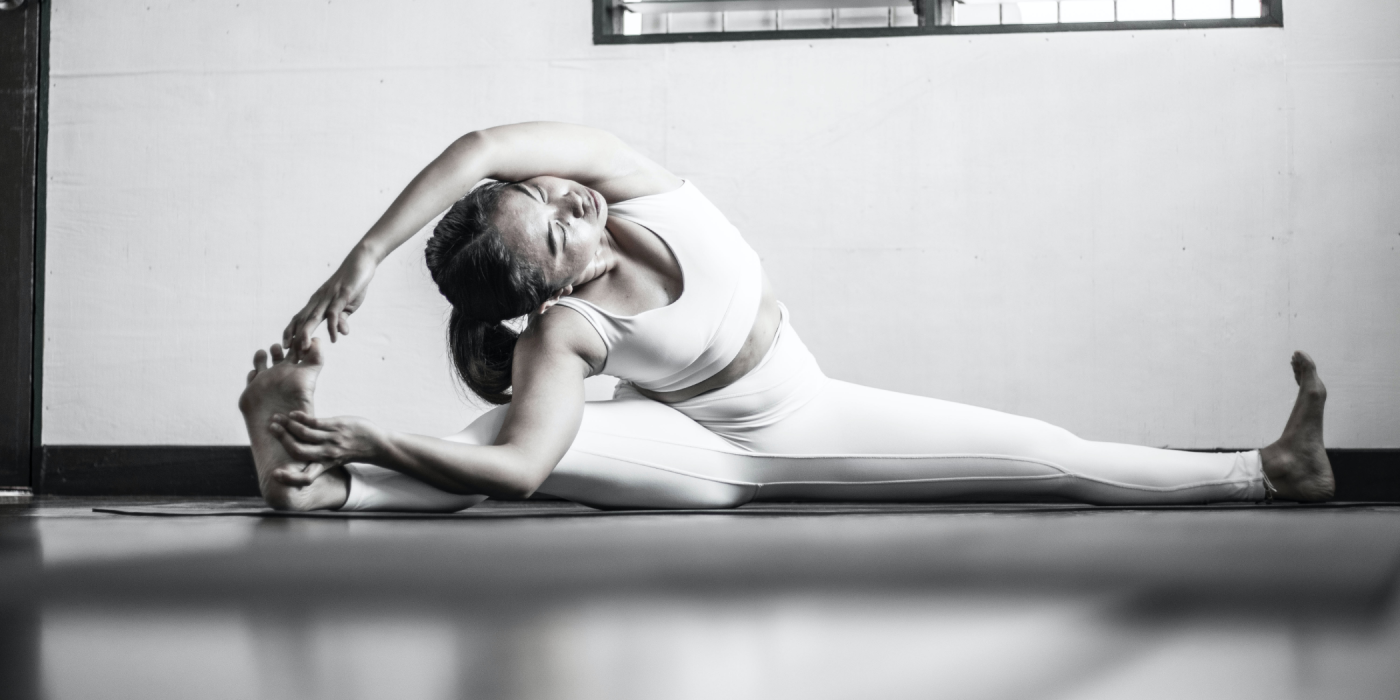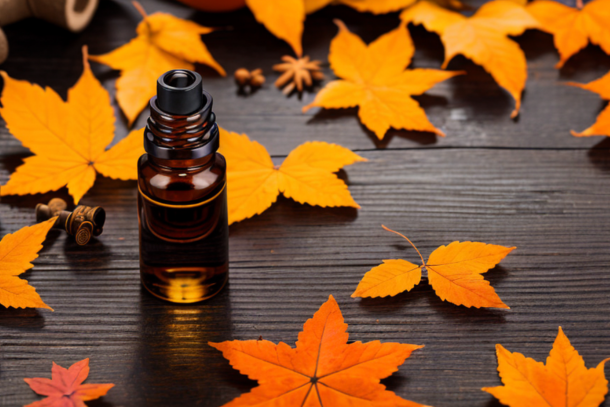How Rolfing Can Help You Improve Your Posture, Reduce Pain, and Increase Flexibility

In today's fast-paced, digital world, it's all too easy to neglect our physical wellbeing. The result? Poor posture, chronic pain, and reduced flexibility—issues that don't just affect our bodies, but our overall quality of life. However, there's a holistic approach that's been gaining recognition for its transformative effects - Rolfing.
Rolfing, also known as structural integration, is a type of bodywork that emphasizes the alignment and balanced integration of the body within its gravitational field. This unique approach goes beyond traditional physical therapies, diving deeper to address not just the symptoms but the root causes of physical discomfort and limitations.
Imagine living a life where standing tall doesn't feel like a chore, where the pain isn't a daily disturbance, and where your body moves with the grace and ease it was designed for. That's the promise of Rolfing. Through a series of sessions, Rolfing aims to restore your body's natural alignment, leading to improved posture, reduced pain, and increased flexibility.
In this article, we're going to delve into the world of Rolfing. We'll explore its benefits, particularly focusing on its ability to enhance your posture, alleviate pain, and promote flexibility. We'll also shed light on what you can expect in a typical Rolfing session, the potential risks, and considerations, and how you can find a certified Rolfer. If you're ready to embark on a journey toward a healthier, more balanced you, read on!
The Concept of Rolfing
What is Rolfing?
Rolfing, also known as structural integration, is a form of bodywork that involves manual manipulation of the body's soft connective tissue, known as fascia. The aim is to realign and balance the body's structure to enhance posture and movement while reducing physical and emotional stress.
Dr. Ida Rolf, a biochemist and physicist, developed this technique in the mid-20th century. She believed that the body's gravity could align it naturally when its fascia is organized correctly.
The Philosophy Behind Rolfing
The philosophy of Rolfing revolves around the interconnectedness of the body. It's believed that tension in one part of the body can affect other parts. Consequently, Rolfing doesn't just focus on the area of discomfort but treats the body as a whole.
How Does Rolfing Work?
Rolfing works by systematically addressing the fascia across the entire body over a series of sessions, typically ten. Each session has its specific goals and areas of the body to focus on, leading to cumulative effects over time. This process, known as the 'Ten Series,' allows practitioners to identify and alleviate strain patterns, leading to more balanced and effortless posture and movement.
Rolfing is often described as a deep-tissue approach, but it's much more than that. It's a holistic technique that aims to integrate the body in gravity, leading to a feeling of lightness, increased mobility, and overall well-being.
Benefits of Rolfing for Posture Improvement
Rolfing, a method of bodywork that focuses on the fascia (the connective tissue that surrounds your muscles and organs), has been found to bring significant improvements in posture.
Understanding the Role of Fascia in Posture
Fascia is a continuous layer of tissue that maintains structural integrity and alignment in the body. Over time, due to lifestyle factors, repetitive motion, or injuries, this tissue can become stiff and restrictive, leading to poor posture. Rolfing, by manipulating the fascia, can address these restrictions, realign the body, and thus improve posture.
Rolfing: A Solution to Postural Imbalances
Rolfing sessions typically involve the Rolfer assessing your posture and identifying areas of imbalance. They then use hands-on techniques to release tension and restrictions in the fascia, enabling the body to return to a more balanced and efficient posture. Over a series of sessions, individuals can experience significant postural changes.
Testimonials and Studies
Several individuals report feeling taller, more grounded, and having an improved sense of alignment after Rolfing sessions. Studies have also backed up these claims. A study published in the Journal of Physical Therapy Science found that Rolfing led to improvements in static standing posture and dynamic movement patterns.
How Rolfing Can Help Reduce Pain
Rolfing offers a unique approach to pain reduction that focuses on the interconnections between muscle tissues and the fascia, the connective tissue that envelops muscles, organs, and bones.
The Rolfing Approach to Pain
Rolfing sees pain as a symptom of imbalances or misalignments in the body's structure. It employs hands-on manipulation and movement education to realign and balance the body. As these imbalances are corrected, tension and stress in the body can decrease, which in turn can lead to a reduction in pain.
Types of Pain Addressed
Rolfing has been noted to be particularly effective for chronic pains including back pain, neck pain, and shoulder pain, as well as tension headaches. This is because Rolfing specifically targets areas of the body where tension and misalignment are common. These types of pain often result from poor posture, overuse, or injury, all of which can lead to misalignment in the body's structure.
Testimonials and Studies
There are numerous testimonials from individuals who have experienced significant pain reduction through Rolfing. In addition to anecdotal evidence, several studies have also documented the effectiveness of Rolfing in reducing pain. For instance, a study published in the Journal of Bodywork and Movement Therapies found that people who underwent a series of Rolfing sessions reported decreased pain and increased range of motion.
Rolfing and Increased Flexibility
The Connection Between Rolfing and Flexibility
Rolfing is well-known for its potential to increase flexibility. The underlying concept of Rolfing involves the manipulation and alignment of the body's connective tissues, known as fascia. Over time, these tissues can become rigid due to factors like stress, injury, or poor posture. Rolfing works to soften and lengthen these tissues, which can result in a significant improvement in flexibility.
The Importance of Flexibility in Daily Activities and Overall Health
The benefits of improved flexibility extend far beyond the physical. Greater flexibility can contribute to improved performance in daily activities, sports, and exercise, and it can also help prevent injuries. On a deeper level, flexibility can facilitate better circulation, promoting overall health and wellbeing.
Scientific Backing and Testimonials
There's evidence to support these claims. A study published in the Journal of Bodywork and Movement Therapies found that individuals who underwent Rolfing sessions showed noticeable improvements in their range of motion. Furthermore, numerous testimonials from individuals who have experienced Rolfing sessions speak to increased flexibility and improved physical performance. These real-life stories bring further credibility to Rolfing as a method for enhancing flexibility.
The fascinating aspect of Rolfing is that it focuses not just on the physical body but also on the holistic integration of body, mind, and spirit. This approach encourages a sense of flexibility that's not just physical but also extends to our ability to adapt to changes in life with ease and fluidity.
The Process of Rolfing: What to Expect in a Session
Whether you're an avid fitness enthusiast or someone seeking relief from chronic discomfort, the process of Rolfing offers a unique approach to holistic well-being.
Preparing for Your Session
Before you attend a Rolfing session, it's important to wear comfortable clothing. Since the practice involves physical manipulation of the body's connective tissues, it's best to ensure you are wearing loose-fitting attire to facilitate movement. Hydration is also crucial as it helps promote tissue health and improves the effectiveness of the Rolfing process.
During Your Session
In a typical Rolfing session, the Rolfer will first engage in a conversation with you about your health history, any specific pain points, your lifestyle, and goals from the therapy. This is followed by an examination of your posture and movement patterns.
The physical work then begins, with the practitioner using their hands to apply pressure and manipulate the fascia (connective tissues), aiming to realign and balance the body in its gravitational field. The technique is distinct for each person, as it is tailored to your specific needs and body condition. It's crucial to maintain open communication with your practitioner about any discomfort during the session.
Post-Session Aftercare
After a session, you might feel immediate relief from certain pain or notice changes in your posture and flexibility. Some people also report temporary discomfort, tiredness, or emotional release. It's important to drink plenty of water post-session and take time for rest and reflection.
Risks and Considerations in Rolfing
As with any therapy, it's important to consider potential risks and who should avoid Rolfing.
Potential Risks and Side Effects
While Rolfing can provide numerous benefits, it's not without its potential risks and side effects. Some individuals may experience temporary discomfort during or after a Rolfing session. This is typically due to the deep tissue work involved, which can lead to muscle soreness. Additionally, emotional discomfort can sometimes occur as Rolfing may release stored emotional tension within the body. Other minor side effects can include light-headedness or tiredness immediately after a session.
Who Should Avoid Rolfing
Although Rolfing is generally considered safe, there are certain groups who should exercise caution. People with certain health conditions, such as deep vein thrombosis, certain types of cancer, or severe osteoporosis should consult their doctor before starting Rolfing therapy. Pregnant women are also advised to discuss this with their healthcare provider before deciding to start a Rolfing program.
In conclusion, while Rolfing has many potential benefits, it's important to consider your personal health circumstances and consult a healthcare professional before starting this or any other new therapy regimen. Remember that while Rolfing can complement traditional medical treatment, it should not replace it. Always consult your doctor if you have any doubts or concerns.
Finding a Certified Rolfer
Finding a qualified and certified Rolfer is essential to ensure you experience the full benefits of Rolfing, while also ensuring your safety. Here are some key steps to guide you in the process.
Conducting Online Research
Start by conducting a simple online search for Rolfers in your local area. Reputable professionals will typically have a professional website, or be listed in a directory of certified Rolfers. The Rolf Institute of Structural Integration offers a search tool on its website, providing a directory of certified Rolfers around the world. You can use this tool to verify the certification of any Rolfer you are considering.
Checking Qualifications and Experience
It's not enough to just find a certified Rolfer – you'll want to make sure they have substantial experience and positive reviews. Don't hesitate to ask about their training, how long they have been practising, and if they specialize in any particular area of Rolfing. They should be willing to share this information with you openly.
Scheduling an Initial Consultation
Once you've narrowed down your options, consider scheduling a consultation with your top choices. This will allow you to ask further questions, get a sense of their professionalism, and decide whether you feel comfortable with them. Remember, Rolfing involves hands-on work, so it's important that you feel relaxed and confident in your practitioner's abilities.
By taking these steps, you'll be well on your way to finding a certified Rolfer who can help you improve your posture, reduce pain, and increase your flexibility.
Wrapping Up: The Transformative Potential of Rolfing
Rolfing, a holistic approach to wellness, has been thoroughly examined in this article. It's clear that its benefits range from improved posture and reduced pain to increased flexibility.
The Power of Posture
Many of us underestimate the importance of maintaining good posture. However, the influence of posture on our overall health and wellbeing is significant. Rolfing offers a practical, hands-on solution for posture correction, fostering proper alignment and balance that can profoundly enhance your day-to-day life.
Alleviating Pain
The ability of Rolfing to reduce chronic pain is perhaps one of its most remarkable benefits. With its deep tissue manipulation and emphasis on structural integration, Rolfing provides a non-invasive, drug-free avenue to pain relief, freeing many individuals from the shackles of persistent discomfort.
Elevating Flexibility
Rolfing also contributes to increased flexibility, an attribute that not only aids in physical performance but also in carrying out simple, everyday activities. Regular Rolfing sessions can help keep your muscles and joints supple, contributing to a higher quality of life.
In essence, the three-pronged advantages of Rolfing - posture improvement, pain reduction, and increased flexibility - underscore its immense potential as a wellness strategy. Remember, each person's journey with Rolfing is unique, and results can vary. But for many, this bodywork technique holds the promise of a healthier, more comfortable life. Embracing Rolfing could well be a step towards greater physical harmony and balance.
Encourage Engagement and Share the Benefits of Rolfing
Share Your Rolfing Journey
We hope this article has enlightened you on the remarkable benefits of Rolfing – a holistic approach that not only improves your posture but also alleviates pain and enhances your flexibility. If you've found this information helpful, why not share the benefits of Rolfing with your friends, family, or anyone you know who might be dealing with postural problems, enduring pain, or struggling with flexibility issues? Spreading the word about Rolfing could be the first step to helping someone embark on a transformative healing journey.
Discussion and Experience Exchange
Have you already tried Rolfing or are you considering it? We would love to hear from you. Your personal experiences, observations, and even questions about Rolfing are welcome in the comment section below. Sharing your experiences not only helps you reflect on your own journey but also provides invaluable insights to others who might be considering this therapeutic approach. We encourage an open and respectful discussion.
Continue Your Journey Towards Holistic Wellness
We urge you to keep exploring and researching Rolfing and other similar holistic wellness techniques. Everyone's journey to health and wellness is unique and what works for one might not work for others. Therefore, continue seeking the techniques and therapies that best fit your individual needs, and keep us updated about your wellness journey. Remember, your story could be the inspiration someone else needs to start their own wellness journey.
Related to this article are the following:
- Unraveling the Knots: An In-depth Guide to Myofascial Massage for Myofascial Pain Syndrome Relief
- The Magic of Chair Massage: Unwinding in the Modern World
- Nature Therapy: A Deep Dive into the Healing Power of the Natural World
- Experience the Warmth: Uncovering the Benefits and Techniques of Hot Stone Massage
- Revolutionizing Workplace Wellness: An Enthusiast's Guide to Office Massage Chairs
I do hope you have enjoyed this article and hope that you will subscribe to my newsletter so you can get the latest information about all things naturally relaxing.
Stay in touch, join the Naturally Relaxing Newsletter
Newsletter Signup
Post Your Comments
or post as a guest
Be the first to comment.
Latest articles in Relaxation

Capturing the Perfect Sunset: Tips and Techniques

The Benefits of Aromatherapy: Essential Oils for Relaxation

Embracing Calm: Innovative Ways to Relax in the New Year

Autumn Aromatherapy: Essential Oils for Relaxation

Embracing Autumn's Tranquillity: Finding Peace in the UK's Golden Season






